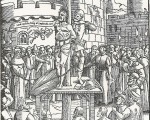
On this day in Tudor history events for week 3 – 9th October.
[Read More...]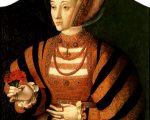
Anna von Kleve, from the line of von der Marck (Germanic) or LaMarck (Francophone), fourth wife of Henry VIII and most commonly known as Anne of Cleves, is known to have shared the lineage of King Edward I of England with Henry’s other five wives. While an interesting anecdote, Edward I, or Edward Longshanks, Hammer of the Scots, died in 1307. In 1539, when Anna came to England to be Henry’s queen, she had many well-known powerful relations, distant though they were. Below, we will go through the genealogy of some of Anna’s royal connections.
[Read More...]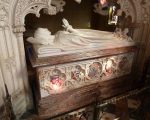
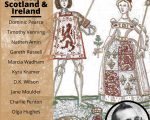
Wales, Scotland and Ireland are often forgotten when you think about the Tudor period, but, as you’ll discover in this month’s Tudor Life magazine, the were very important indeed.
A top quality with 78 pages, this “Dominions” edition of Tudor Life is an amazing focus on the British Isles (and there’s a really great article on grilled cheese by Olga Hughes – Welsh Rarebit!)
[Read More...]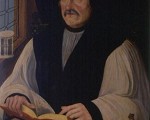
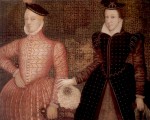
On 29th July 1565, Mary, Queen of Scots, married Henry Stuart (Stewart), Lord Darnley, at Holyrood Palace (the Palace of Holyroodhouse), Edinburgh.
You can find out all about Mary, Queen of Scots, at our Mary, Queen of Scots Bio page, but who was the bridegroom? Here are a few facts about him:
[Read More...]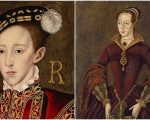
On 21st June 1553, letters patent were issued stating that King Edward VI’s heir was Lady Jane Grey, eldest daughter of the king’s cousin, Frances Brandon, Duchess of Suffolk.
Edward VI was dying, having been ill for a few months, and in the original draft of his “Devise for the Succession” he stipulated that the Crown would descend through the male heirs of Frances, Duchess of Suffolk, if Edward died childless. The problem was that there were no male heirs yet, so when Edward made a turn for the worse he decided to change the document to read: “To the Lady Fraunceses heirs males, if she have any such issue before my death to the Lady Jane and her heirs males.”
[Read More...]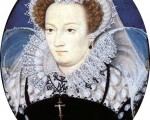
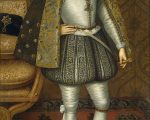
19th June 2016 marks the 450th birthday of King James I and VI of England and Scotland. Unification between the two countries, though at times strained, was brought about by James ascending the throne of England in 1603. The unification was the result of one hundred years of Tudor politics.
Back in 1503, Henry VII arranged for his eldest daughter, Margaret Tudor, to marry James IV of Scotland. Margaret during the course of the marriage gave birth to the future James V in 1512. Fighting between Scotland and England resumed. In 1523, Henry VIII attempted to unite the thrones of Scotland and England by offering his daughter, Princess Mary, as a bride for James V. This proposal was rejected. Moving forward several years, James V married the French Mary of Guise in 1538. Henry VIII had lost his third wife in October 1537 and was seeking a new bride. James V beat his uncle, Henry VIII, who was also trying to marry Mary of Guise. In 1541, James V’s mother and Henry VIII’s sister, Margaret Tudor, passed away; this effectively ended the nearly thirty-year truce between Scotland and England. A war broke out, which saw the death of James V due to illness and depression of the current state of war in December 1542.
[Read More...]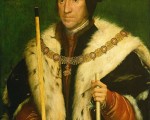
Thomas Howard was the eldest son of Thomas Howard, 2nd Duke of Norfolk, and of Elizabeth Tilney. He was the brother of Elizabeth Boleyn (née Howard) and Edmund Howard so was uncle to Queens Anne Boleyn and Catherine Howard. Howard’s father and grandfather had fought on Richard III’s side at the Battle of Bosworth but Howard was able to work his way back into royal favour by fighting for the Crown against both the Cornish rebels and the Scots in 1497. He was made a Knight of the Garter in 1510, was created Earl of Surrey in 1514 and succeeded his father as Duke of Norfolk in 1524. In September 1514 he was prominent in leading the English army in defeating the Scots at the Battle of Flodden.
[Read More...]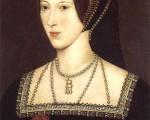
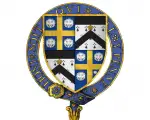
On 2 May 1536, Anne Boleyn was ordered to present herself to the Privy Council. Standing before the Duke of Norfolk, Sir William Fitzwilliam and Sir William Paulet, Anne Boleyn was arrested for committing adultery with three men: Mark Smeaton, Henry Norris and an unnamed man.
After lunch, Anne was escorted from Greenwich to the Tower of London. Popular myth tells of how Anne entered the Tower of London from the Thames through ‘Traitors Gate’. However, researchers and historians suggest that she would have arrived through the Court Gate near the Byward Tower – which was the common entrance for people of nobility and royalty. Here she was met by Sir Edmund Walsingham, the Lieutenant of the Tower, and escorted inside.
[Read More...]